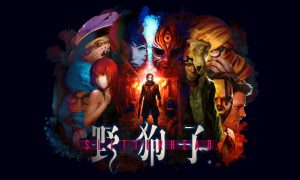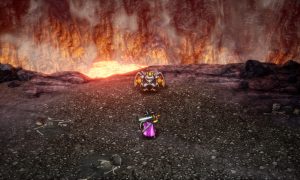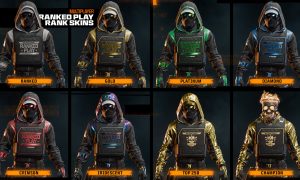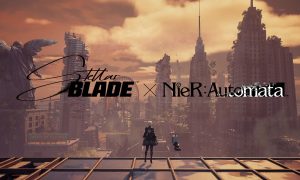In the late 1990’s two real-time strategy games came out around the same time, Total Annihilation and Dark Reign. Dark Reign became an obscure title that most people have forgotten about, while Total Annihilation became wildly popular. Part of the popularity came from the ability to customize units in Total Annihilation. First-person shooters were gently giving end users the ability to create their own custom levels in titles like Duke Nukem 3D, Quake, and Unreal. However, the real-time strategy genre had never seen anything like this before. It wasn’t long before hundreds of new units became available for Total Annihilation, and Total Annihilation made it’s mark in gaming history.
You might have thought that a sequel to Total Annihilation would have come shortly after, but it was a while before Chris Taylor would release another real-time strategy game. Supreme Commander came out in 2008 and was considered the spiritual successor to Total Annihilation. While it was easy to see similarities between the two titles, Supreme Commander added many features that were considered groundbreaking. It hasn’t taken nearly as long for a sequel to come out, and anyone who has played either of these titles should feel familiar with this title.
The biggest concern for playing a real-time strategy game on the console is the controls. Having two analog-sticks, a D-pad, and eight buttons isn’t nearly as convenient as using a mouse and keyboard. You might think that developers would just give up trying to make a RTS on the consoles, but the team behind Supreme Commander 2 has risen to the challenge and done a decent job with what they are given.
Movement is handled with the analog sticks. The left analog stick moves the cursor around the map, while the right analog stick zooms in and out of the map, as well as swivels the camera. Selecting individual units is done by tapping A, but if you hold down the A button multiple units can be selected and grouped together. The right button selects all of the units on the screen, but holding down the right button and using the D-pad separates the units selected into air, land, and sea groupings. The Y button brings up the build radial for that particular unit. Certain buildings build aircraft, while another manufactures water vessels, and another handles land-based units. Certain units create defense turrets and repair damaged buildings and units. The left button accesses the research tree to upgrade your units.
It does feel a bit odd using the control scheme if you haven’t played a console RTS before. The movement and zooming in and out handles fairly easily, but selecting the correct units can be bothersome. The use of the right button helps this, but it is easy to forget about that feature in the heat of battle. The radial dial for selecting units works fine, but sometimes highlighting the unit in a diagonal spot is a bit tricky. If you are new to the control scheme, it helps to actually have the controls from the manual in front of you.
Graphically Supreme Commander 2 looks fine. When you aren’t fully zoomed in the units look good, with smooth animations and detailed textures. When you get in too close, you can see where some of the edges of the polygons meet. This view isn’t practical for much of the game. The units are varied enough that each faction has a distinct look, but not so varied that you aren’t going to be able to differentiate the different kinds of air ships or vehicles. Supreme Commander 2 allows you to zoom out of the battlefield much further than most RTS games. When zooming out the units start to change to icons. This view helps you get a feel for the big picture and to cover large areas quickly, but it’s not something you want to use for selecting individual units.
Supreme Commander 2 features a computer voice to help you when new upgrades are available as well as give instruction with new concepts. Some other voice acting is included during cut scenes and dialog sequences. For the most part the voice acting is done well, although they can occasionally be a bit calmer than the situation might suggest. The background music delivers a good mix of intensity for what is going on during the game, while not overpowering the game.
Three factions are included in Supreme Commander 2. All three units have land and air units, but only two of the factions have sea units. The Illuminate don’t have any sea units, but their land units hover over the water. Experimentals are units that are specific to each faction and have incredible firepower. Some of them have abilities like constructing other units or transporting units. Each of the sides has very different units, but all sides feel balanced. Two resources are used within Supreme Commander 2. Mass is collected by putting mass extractors over mass deposits, reclaiming remnants of destroyed buildings and units, and by converting energy to mass. Energy comes from energy generators that can be built anywhere on the map. Their production can be increased by researching them in the upgrade tree. Mass is the more important resource of the two, and protecting the mass extractors is important to your success. Destroying an enemy’s mass extractors can turn the tide in your favor.
The premise of Supreme Commander 2 is that you are controlling an Armored Command Unit or ACU. This ACU travels over the map to create and repair buildings. Buildings can create other units, develop upgrades, and defend the base from attacks. Engineers can also be built to assist in these duties, but if you lose your ACU, the game is over right then and there.
As the engineers and ACU creates buildings on the battleground, those buildings often will build other units. Some of the now standard conventions of RTS games are included in Supreme Commander 2. The buildings can be queued up to produce multiple units. Waypoints can be assigned for the units produced from that building. You can also delay orders from buildings when you are running low on resources so that you can set priorities on what gets built. The units can also be assigned commands, like moving to a specific spot, attacking and guarding units, and other abilities depending on the unit selected.
Supreme Commander 2 does include a feature that will make many players happy. You can actually save the game during the single-player portion. Because the battles can last a while, this is a feature that is appreciated, especially since this seems to be neglected on the console.
The main part of the single player experience is the campaign. Unfortunately, this is probably the most disappointing part of the game. Each side only has six missions, and the first couple missions for each faction feel like a tutorial for the game. They don’t provide much challenge except for the very last mission of the faction. However, you won’t want to pay attention to the time goal because it doesn’t seem realistic with the controller control scheme. A story loosely ties all three factions together, so you need to play the factions in order.
The other mode in Supreme Commander 2 is the Skirmish mode. The single-player version lets you choose from the available maps, choose your faction and the AI factions with specific personalities and difficulty levels, and what teams are there for cooperative or competitive battles. Three victory conditions can be set. In Assassination the object is destroy the enemy commanders. The object of Supremacy mode is to destroy all of the enemy structures. The Infinite War is like a sandbox mode, where there aren’t any kind of limits or conditions for victory.
With Xbox Live, you can play the Skirmish mode with up to four players. All of the maps and objectives are identical to the single player Skirmish. This puts everyone on even ground since everyone has the same controls. While being able to play online against others is a nice addition, it would be nice if there was a larger variety of modes to play.
Ron Burke is the Editor in Chief for Gaming Trend. Currently living in Fort Worth, Texas, Ron is an old-school gamer who enjoys CRPGs, action/adventure, platformers, music games, and has recently gotten into tabletop gaming.
Ron is also a fourth degree black belt, with a Master's rank in Matsumura Seito Shōrin-ryū, Moo Duk Kwan Tang Soo Do, Universal Tang Soo Do Alliance, and International Tang Soo Do Federation. He also holds ranks in several other styles in his search to be a well-rounded fighter.
Ron has been married to Gaming Trend Editor, Laura Burke, for 28 years. They have three dogs - Pazuzu (Irish Terrier), Atë, and Calliope (both Australian Kelpie/Pit Bull mixes), and an Axolotl named Dagon!

See below for our list of partners and affiliates:
























